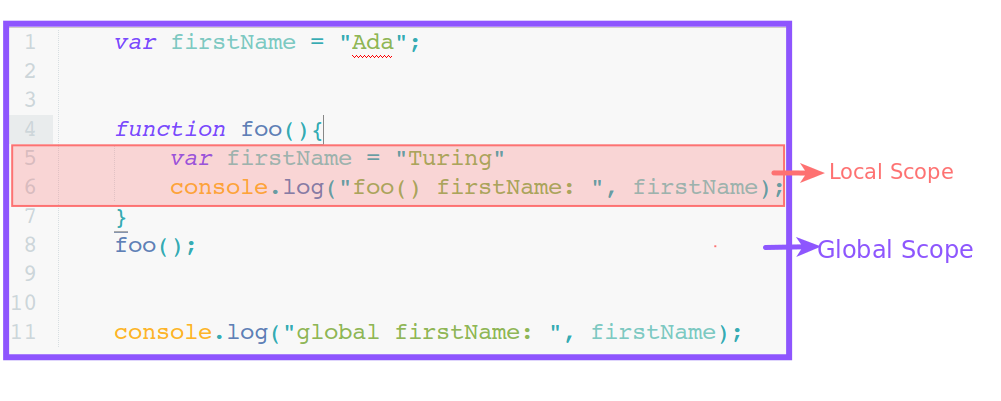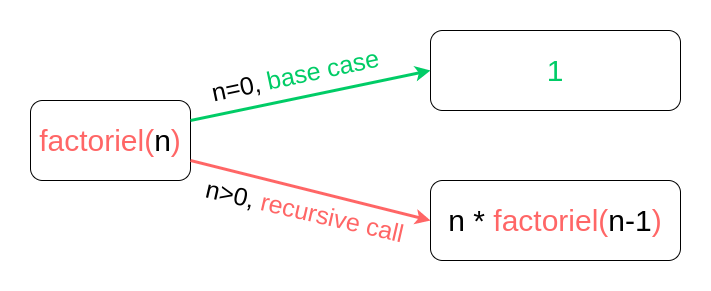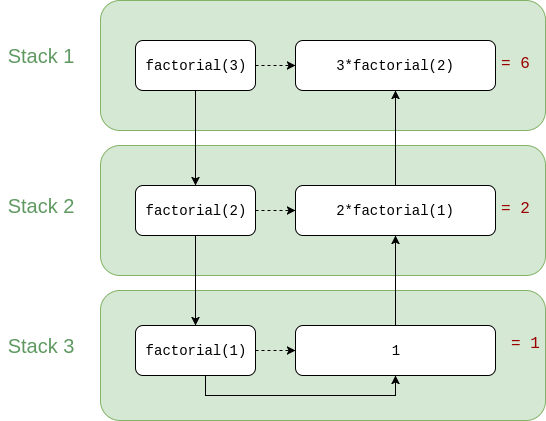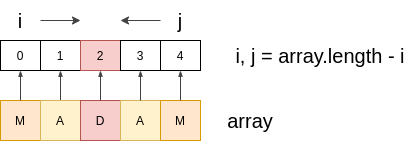Advanced JavaScript Functions
Created by
Function Declaration vs.
Function Expression vs.
Function Constructor
Function Declaration vs. Function Expression vs. Function Constructor
Function declaration
function add(x,y){
return x+y
}
- Semicolons are not required after function declaration (though they did not hurt.)
Function expression
const add = function(x,y){
return x+y
};
- Semicolons are required after function expressions!
- function name can be omitted in function expressions to create anonymous function.
- a function expression can be immediately invoked (i.e. as IIFE)
Function expression
const f = function add(x,y){
return x+y
};
console.log("f(2,3):", f(2,3)); // f(2,3):5
console.log("add(2,3):", add(2,3)); // ReferenceError: add is not defined
- A function name can be given in function expression. But the function name is scoped to function body! Could be useful for recursion or debugging purposes.
Expression vs. declaration
- Hoisting
- Function declarations are hoisted
- Function expressions are not hoisted
- It is a good practise always to declare the variables (including functions) first, before using them.
- Following this practise you will not have to wander what is hoisted and what is not.
Function constructor
const sumLog = new Function('a', 'b', 'console.log(`a + b = ${a+b}`)');
sumLog(2,4);
- Do not use this way to create a function (unless you know exactly why you need it)!
- Reference: Function Constructor @MDN
Conditional function definition
the strict ES2015 behaviour
if (0){
function add(x,y){
x+y;
};
};
console.log("add:", add); // undefined
- Not browser compatible! Some browser would defined the function, because the function declaration is hoisted.
Conditional function definition
Safer way:
var add;
if (0){
// function expressions are not hoisted
add = function(x,y){
x+y;
};
};
console.log("add:", add); // undefined
Scope
Scope
- The context in which values and expressions are "visible," or can be referenced.
- Scopes can be layered in a hierarchy, so that child scopes have access to parent scopes, but not vice versa.
- Each function in JavaScript creates its own scope!

- Inner Scope can use the names in Outer Scope
- Outer Scope can not see the names defined in Inner Scope
- If same name is defined in both Scopes, then the Inner Scope name shadows the Outer Scope name
Example
let x = 1, y=1; // x and y in global scope
function foo(){
let x = 2, y=2; // x and y in foo scope
function bar(){
let y = 3; // y in bar scope
x = 3; // uses x in foo scope
console.log(`x,y in bar: ${x}, ${y}`);
}
bar();
console.log(`x,y in foo: ${x}, ${y}`);
}
foo();
console.log(`x,y in global: ${x}, ${y}`);
// OUTPUT:
//x,y in bar: 3, 3
//x,y in foo: 3, 2
//x,y in global: 1, 1
References
A note on Programming Paradigms
A note on Programming Paradigms
Overview
- Programming paradigms are a way to classify programming languages based on their features.
- Languages can be classified into multiple paradigms.
Common programming paradigms
- Procedural
- Imperative programming with procedure calls
- Object-oriented
- Programming by defining objects that send messages to each other. Objects have their own internal (encapsulated) state and public interfaces
- Functional
- Programming with function calls that avoid any global state
- Logic
- Programming by specifying a set of facts and rules. An engine infers the answers to questions.
Functions as first-class citizens
Functions as first-class citizens
From its creation back in 1995, JavaScript supports function as first-class citizens (objects)
JavaScript's C-like syntax, including curly braces and the clunky for statement, makes it appear to be an ordinary procedural language. This is misleading because JavaScript has more in common with functional languages like Lisp or Scheme than with C or Java
- What that means?
- A function can be treated as object, expression or statement.
- A function can be passed as argument to other functions.
- A function can be the return value of the
returnoperator.
example - function passed as argument
function callback() {
console.log(`I will be called!`);
}
function caller( f ){
console.log(`This is the CALLER`);
f();
}
// we pass the callback function to caller
caller( callback );
// This is the CALLER
// I will be called!
example - function passed as argument
const greeting = function(){
alert("Welcome");
}
// SetTimeout will call the greeting after 4s
setTimeout(greeting, 4000);
example
function as return value
const greeting = function(name){
return function(){
alert("Welcome, "+ name);
}
}
setTimeout(greeting("Ada"), 4000);
example
const sum = function(x){
return function(y){
return x+y;
}
}
console.log( "sum:", sum(2)(3) );
Pros and Cons
- Pros
- The new (ES2015) arrow functions syntax make JavaScript a language suited for lambda-calculus (functional programming paradigm)
- Cons
- Not intuitive for persons used with classical procedural languages.
test yourself
Immediately-invoked function expressions (IIFE)
Immediately-invoked function expressions (IIFE)
IIFEImmediatelyInvokedFunctionExpression
- IIFE is a pattern which allows to encapsulate our program, so that it will not export any global variable.
- When a function will be used only once (usually to scope local variables), we do not need to define it first.
- The definition itself will expose a global variable (function name).
- It's more efficient to invoke it as an anonymous function.
( function(){} )();
function(){}is an anonymous function declaration!( function(){} )is an anonymous function expression!- We can only invoke function expressions.
(function(x,y){
console.log( x+y );
})(2,3);
is the same as
(function(x,y){
console.log( x+y );
}(2,3));
Notes on IIFE and ES6
- After the introduction of block scope in ES6, we can use instead of IIFE, just a block, to encapsulate our program.
{
// if you use only let and const to declare variables,
// your program will not export any global variables!
let x = 2;
let y = 3;
// other code
}
Closures
Closures
- Allows a function which is executed outside its outer scope, to access the values of these scoped variables.
- In other words, a closure is observed, when an inner function closes over (captures, remembers) the variables from its outer lexical scope when it is called outside that scope.
- Reference: Closures @MDN
function outer(){
const x = 5;
function inner(){
console.log(x);
}
return inner;
}
const f = outer();
f(); // f can access the local x !
Common problem - "no closure in loop"
var cats = [];
for (var i = 0; i < 3; i++) {
cats[i] = function(){
console.log(`Cat ${i} is ready!`);
}
}
cats[0](); //Cat 3 is ready!
cats[1](); //Cat 3 is ready!
cats[2](); //Cat 3 is ready!
the value of 'i' in the cats[i] function body is determined when the function is invoked!
"closures in loops" - IIFE solution
var cats = [];
for (var i = 0; i < 3; i++) {
(function(i){
cats[i] = function(){
console.log(`Cat ${i} is ready!`);
}
})(i)
}
cats[0](); //Cat 0 is ready!
cats[1](); //Cat 1 is ready!
cats[2](); //Cat 2 is ready!
The value of i - which is a parameter to the IIFE is preserved in cats[i] functions, when they are called outside the IIFE scope.
"closures in loops" - Factory solution
var cats = [];
function catMaker(i){
return function(){
console.log(`Cat ${i} is ready!`);
}
}
for (var i = 0; i < 3; i++) {
cats[i] = catMaker(i);
}
cats[0](); //Cat 0 is ready!
cats[1](); //Cat 1 is ready!
cats[2](); //Cat 2 is ready!
"closures in loops" - "let" solution
Definitely, this is the simplest solution :)
var cats = [];
for (let i = 0; i < 3; i++) {
cats[i] = function(){
console.log(`Cat ${i} is ready!`);
}
}
cats[0](); //Cat 0 is ready!
cats[1](); //Cat 1 is ready!
cats[2](); //Cat 2 is ready!
common problem - "timeout problem"
var colors = ["red", "green", "blue"];
for (var i = 0; i < colors.length; i++) {
setTimeout(function(){
changeBG("box", colors[i]);
}, 1000)
}
function changeBG(id, color){
var node = document.getElementById(id);
node.style.background = color;
}
"closures in loops - timeout IIFE fix"
var colors = ["red", "green", "blue"];
for (var i = 0; i < colors.length; i++) {
(function(i){
setTimeout(function(){
changeBG("box", colors[i]);
}, 1000*i)
})(i);
}
function changeBG(id, color){
var node = document.getElementById(id);
node.style.background = color;
}
setTimeout() is invoked immediately 3 times. The delay is for the inner function. If we pass same delay, they will be invoked simultaneously after the delay. So, we need to change the delay, as well, i.e. i*1000
"closures in loops - timeout separate call fix"
var colors = ["red", "green", "blue"];
for (var i = 0; i < colors.length; i++) {
doTimeout(i);
}
function doTimeout(i){
setTimeout(function(){
changeBG("box", colors[i]);
}, i*1000)
}
function changeBG(id, color){
var node = document.getElementById(id);
node.style.background = color;
}
Test it!
Recursion
Recursion
- A recursive function is a function which calls itself (directly or indirectly)
- Each call creates a separate function stack!
- Recursion can be endless if we do not take care when it has to stop to call itself. I.e. a recursive function must have a base case - a condition that makes the function to return a value, instead of calling itself.

Factorial - formula
n! = (n-1)!*n, if n > 0
n! = 1, if n = 0
Reference: Факториел @wikipedia
Factorial - recursive demo
function factorial(n){
if(n===0){ // recursion end condition
return 1
}else{
return n*factorial(n-1) // recursive call
}
}
factorial(3);
- Note that we can use the ternary operator to shorten the code above
function fact(n) {
return n===0? 1: n*factorial(n-1);
}
Factorial - execution stack diagram

Factorial - Task
Write down a function which uses the iterative approach (i.e. - loop) to solve the Factorial problem
Recursive Power Calculation
baseexp = base * baseexp - 1
base0 = 1
function power(base, exponent) {
if (exponent === 0)
return 1;
else
return base * power(base, exponent - 1);
}
console.log(power(2, 10));
// same with ternary operator
function power(base, exponent) {
return exponent === 0 ? 1 : base * power(base, exponent - 1);
}
console.log(power(2, 10));
Power Calculator - Task
Write down a function which uses the iterative approach (i.e. - loop) to solve the Power problem
Traversing the DOM - TASK
- apply backgroundColor:"red" for each element in #startNode, which has class "red"
- the code given bellow tries to solve the problem, but it has bugs. Can you fix them.
<!DOCTYPE html>
<html lang="en">
<head>
<meta charset="UTF-8">
<meta name="viewport" content="width=device-width, initial-scale=1.0">
<title>TASJ_DOM_Travers</title>
</head>
<body>
<p>TASK: apply backgroundColor:"red" for each elelement in #startNode, which has class "red"</p>
<p>paragraph 2</p>
<ul id="startNode">
<li>
<ol>
<li class="red">make me red</li>
<li>do not make me red</li>
</ol>
</li>
<li class="red">make me red</li>
</ul>
<ol>
<li class="red">do not make me red</li>
</ol>
<script>
function doSomething(node) {
if (node.classList.contains("red")) {
node.style.backgroundColor = "red";
console.log(node.className);
}
};
// HW: fix it
function traverseDOM(node) {
// get all HTML child nodes of node
let children = node.children;
// loop over children:
for (let i = 0; i < children.length; i++) {
let el = children[i];
// do something with each child element:
doSomething(el);
traverseDOM(el);
}
}
let startNode = document.querySelector("#startNode");
traverseDOM( startNode );
</script>
</body>
</html>
Traversing the DOM Element Nodes - Solution 1
See the Pen traverseDOM_ElementNodes by Iva Popova (@webdesigncourse) on CodePen.
Traversing the DOM Element Nodes - Solution 2
- This demo use the method given by Douglas Crockford in "JavaScript: The Good Parts"
See the Pen traverseDOM_ElementNodes_Crockford by Iva Popova (@webdesigncourse) on CodePen.
Traversing ALL of DOM Nodes
- This demo use the method given by Douglas Crockford in "JavaScript: The Good Parts"
See the Pen traverseDOM_AllNodes by Iva Popova (@webdesigncourse) on CodePen.
References
Functions - Best Practices
Functions - Best Practices
Do One Thing and Do It Well (and Name It Well )
- Do one thing per function. Not many things. If you are doing many things, then you should divide it to many functions.
- Why?
- Ease of debugging .
- If you write a function for each task you do, giving it a good name, you'll not need to put comments.
Exercises
Exercises
countEvenNumbers
generateRandomNumber
SumEven2DimArrayElements
isPalindrome
Solutions
countEvenNumbers
Code
/* -------------------------------------------------------------------------- */
/* task: countEvenNumbers */
/* -------------------------------------------------------------------------- */
// Да се дефинира функция countEvenNumbers, която връща броя четни числа в
// подаденият й масив от числа:
function countEvenNumbers(arr) {
let evenCount = 0;
for (let i = 0; i < arr.length; i++) {
const number = arr[i];
if(number%2===0){
evenCount+=1;
}
}
return evenCount;
}
// примерно извикване:
let evenCount = countEvenNumbers( [1,4,2,3,5] );
console.log( evenCount );
// 2
generateRandomNumber
Algorithm
- Reference: Check this StackOverflow answer
Code
/* -------------------------------------------------------------------------- */
/* task: generateRandomNumber */
/* -------------------------------------------------------------------------- */
// Да се дефинира функцията generateRandomNumber(start, end), която генерира
// цяло случайно число в интервала, зададен чрез параметрите start и end.
// Hint: използвайте Math.random() функцията за генериране на случайно число.
function generateRandomNumber(start,end) {
return Math.floor(Math.random() * (start - end + 1)) + end;
}
// примерно извикване:
let randomNumber = generateRandomNumber(1,100);
console.log( randomNumber );
// randomNumber трябва да е цяло число, 1 >= randomNumber <=100
SumEven2DimArrayElements
Code
/* -------------------------------------------------------------------------- */
/* task */
/* -------------------------------------------------------------------------- */
// Да се дефинира функция SumEven2DimArrayElements(), която връща сумата от
// четните елементи на подаден й двумерен масив.
let arr = [
[1,2,3],
[4,5,6]
];
function SumEven2DimArrayElements(arr) {
let sum = 0;
for (let i = 0; i < arr.length; i++) {
const row = arr[i];
for (let j = 0; j < row.length; j++) {
const number = row[j];
if(number%2===0){
sum+=number;
}
}
}
return sum;
}
// Примерно извикване на функцията:
let sum = SumEven2DimArrayElements(arr);
console.log(sum);
// expected output: 12
isPalindrome
Algorithm

code
/* -------------------------------------------------------------------------- */
/* task: isPalindrome */
/* -------------------------------------------------------------------------- */
// Да се дефинира функция isPalindrome, която връща "true" ако подадената й
// като аргумент дума е палиндром, и "false" - ако думата не е палиндром.
// Палиндром е дума, която се чете по един и същ начин от ляво надясно и от
// дясно наляво. Пример за палиндром са: мадам, боб, капак.
function isPalindrome(word) {
// изчисляваме индекса, който маркира средата на думата:
let middle = Math.floor(word.length/2);
// console.log(`middle index of ${word} is: ${middle}`);
for (let i = 0; i < middle; i++) {
let j = word.length - 1 - i;
if(word[i]!==word[j]){
// the word is not palindrome
return false
}
}
// the word is palindrome
return true;
}
// примерно извикване:
console.log( isPalindrome("madam") );// true
console.log( isPalindrome("test") ); // false
These slides are based on
customised version of
framework

